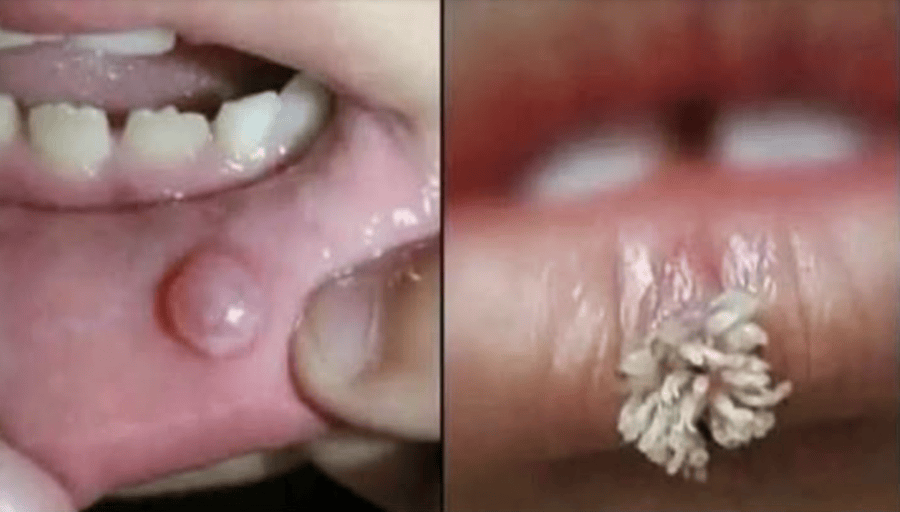Cold sores, often referred to as fever blisters, represent a widespread viral condition primarily triggered by the herpes simplex virus type 1 (HSV-1). In certain instances, herpes simplex virus type 2 (HSV-2), typically linked to genital herpes, may also cause cold sores, particularly through oral-genital contact.
Causes of Cold Sores
Cold sores spread easily and are highly contagious, moving from one person to another primarily through contact with infected saliva or skin. The virus transmits through several common pathways:
- Direct contact: Kissing or sharing drinks, food, or utensils with someone who has an active infection.
- Indirect contact: Using items like towels, lip balm, or cutlery that carry the virus.
- Self-infection (Autoinoculation): Touching a cold sore and then another part of the body, such as the eyes or genitals, can spread the virus.
Symptoms of Cold Sores
Cold sores progress through distinct stages:
- Tingling or itching: A burning or itching feeling often signals the onset, appearing 1–2 days before the sore forms.
- Blister formation: Small, fluid-filled blisters emerge, typically near the lips but occasionally on the nose or gums.
- Blister rupture: The blisters burst, creating painful, red sores, which are highly contagious at this stage.
- Scabbing: The sores crust over and heal as the crust eventually falls off.
An outbreak generally lasts 7 to 10 days. The virus remains dormant in the body after healing and may reactivate due to specific triggers.
Triggers for Cold Sore Outbreaks
Several factors can awaken the dormant virus, leading to new sores:
- Emotional or physical stress
- Exposure to sunlight or UV rays
- Hormonal changes, such as those during menstruation or pregnancy
- Illnesses like colds or fevers
- A weakened immune system from medical treatments or health conditions
Treatment Options for Cold Sores
While no permanent cure exists, treatments can alleviate symptoms and promote faster healing:
- Antiviral medications: Drugs like acyclovir, valacyclovir, or famciclovir shorten outbreak duration and severity, especially when taken early.
- Topical antiviral creams: These reduce symptoms and may limit viral spread.
- Pain relievers: Over-the-counter options like ibuprofen or acetaminophen, or numbing creams, ease discomfort.
- Moisturizing balms or creams: Lip products soothe dryness and reduce pain around sores.
Preventing Cold Sores
To minimize the spread of cold sores or reduce outbreak frequency:
- Avoid kissing or close contact during an active outbreak.
- Refrain from sharing personal items like lip balms, cutlery, or towels.
- Apply lip sunscreen if sunlight triggers outbreaks.
- Strengthen the immune system with a balanced diet, regular exercise, and stress management.
When to Seek Medical Advice
Consult a healthcare provider if:
- Outbreaks occur frequently or are unusually painful.
- Over-the-counter treatments fail to provide relief.
- Sores spread beyond the lips or grow significantly.
- Pain disrupts eating, drinking, or speaking.
- A weakened immune system increases the risk of complications.
Alzheimer’s Disease: A Possible Link to Oral Health
Alzheimer’s disease remains the leading cause of dementia in the UK, according to the NHS. While its precise origins are not fully understood, factors such as advancing age, untreated depression, a family history of the condition, and lifestyle factors tied to cardiovascular health contribute to its development.
Emerging Research on Alzheimer’s and Infections
Recent studies suggest Alzheimer’s may not solely be a neurodegenerative disease but could involve an infectious component. A 2019 study highlights a potential connection between Alzheimer’s and gum disease.
Dr. Stephen Dominy, co-founder of Cortexyme, noted, “Infectious agents have been implicated in Alzheimer’s development and progression before, but evidence of causation has lacked strength.”
The Role of Gum Disease in Alzheimer’s
Researchers examined gingipains, toxic enzymes produced by the bacterium Porphyromonas gingivalis, and found elevated gingipain levels associated with two proteins already linked to Alzheimer’s: tau and ubiquitin. Intriguingly, these toxic gingipains were also detected in the brains of deceased individuals who had never been diagnosed with Alzheimer’s. This raises questions about whether these individuals would have developed Alzheimer’s if they had lived longer or if Alzheimer’s itself leads to poor oral hygiene.
The research team stated, “Our detection of gingipain antigens in the brains of individuals with Alzheimer’s pathology, even without a dementia diagnosis, suggests brain infection with P. gingivalis is an early event that may explain pathology in middle-aged individuals before cognitive decline.”
Experimental Findings and Potential Treatments
In mouse studies, a compound called COR388, developed by Cortexyme, reduced amyloid-beta production and neuroinflammation. David Reynolds, chief scientific officer at Alzheimer’s Research, emphasized the importance of exploring new approaches: “With no new dementia treatments in over 15 years, testing drugs targeting the bacteria’s toxic proteins, which have shown promise in mice, is critical for tackling diseases like Alzheimer’s.”




